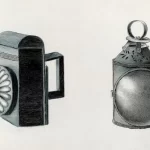Design Patent Search India: Finding Inspiration Safely
- February 1, 2024
- By Sarita Thomas
- Read 17 minutes
A design patent is a type of patent that protects the unique ornamental design or appearance of a functional item. Unlike utility patents, which protect the way an invention works or is used, design patents focus on how an invention looks. In India, design patents are governed by the Designs Act, of 2000, which provides legal protection to the creators of new and original designs. Design patents can be granted for a wide range of products, including furniture, clothing, jewelry, and electronic devices.
Design patent applications in India undergo a thorough examination process to determine if the design is new, original, and distinctive. The Indian Patent Office conducts searches to ensure that the design is not similar to any existing designs. This process helps in maintaining the uniqueness and originality of the design. Once a design patent is granted, the owner has exclusive rights to use, sell, or license the design in India for 15 years from the date of registration.
Design patent search in India is an important step for designers and inventors to ensure that their design is unique and does not infringe on any existing patents. By conducting a design patent search, designers can identify potential conflicts and make necessary modifications to their designs to avoid legal issues. It also allows designers to gain inspiration from existing designs and create innovative and distinctive products. Design patent searches in India can be conducted through various online databases and search tools provided by the Indian Patent Office. Designers can search for specific design elements, keywords, or classifications to find relevant design patents.
In conclusion, design patent search in India plays a crucial role in finding inspiration safely and protecting the rights of designers. It helps in ensuring that designs are unique and original, and do not infringe on any existing patents. By conducting a thorough design patent search, designers can create innovative products and contribute to the growth of the design industry in India.
Importance of design patents
Design patents play a crucial role in protecting the unique visual appearance of a product. They provide legal protection to the ornamental design of an object, preventing others from copying or imitating the design without permission. Design patents are particularly important in industries where aesthetics and visual appeal are key factors in attracting customers. By obtaining a design patent, businesses can ensure that their innovative designs are safeguarded and that they have exclusive rights to produce and sell products with those designs. This not only helps businesses establish a competitive edge in the market but also encourages innovation and creativity. Design patents also provide a valuable tool for designers and inventors to showcase their work and gain recognition for their unique designs. With the increasing importance of design in today’s consumer-driven market, design patents have become an essential aspect of intellectual property protection.
Design patent search process
When conducting a design patent search in India, it is important to follow a systematic process to ensure a thorough and accurate search. The following steps outline the design patent search process:
Define the search criteria: Start by clearly defining the parameters of your search. This includes identifying the specific design features, such as shape, color, or pattern, that you are interested in.
Search databases: Utilize design patent databases, such as the Indian Patent Office’s online database, to search for existing design patents. Use keywords, classifications, and other search filters to narrow down the results.
Review search results: Carefully review the search results to identify design patents that are similar to your design. Pay attention to the scope of protection granted by each patent.
Analyze and compare: Analyze the similarities and differences between your design and the identified design patents. Consider factors such as overall appearance, ornamental features, and functionality.
Evaluate novelty and non-obviousness: Assess whether your design meets the criteria of novelty and non-obviousness. A design is considered novel if it has not been disclosed or made available to the public prior to the filing date. It is considered non-obvious if it is not an obvious variation or combination of existing designs.
By following these steps, you can conduct a comprehensive design patent search in India and find inspiration for your own design while ensuring that you are not infringing on existing patents.
Understanding Design Patent Search
Definition of design patent search
A design patent search is a process of searching for existing design patents in a specific jurisdiction, such as India. It involves examining the designs of previously granted patents to determine whether a similar design already exists. The purpose of a design patent search is to ensure that a new design is unique and not infringing on any existing patents. This search helps designers and inventors find inspiration for their designs while also ensuring that their creations are legally protected. By conducting a design patent search, individuals can avoid potential legal issues and confidently move forward with their design projects. The search results provide valuable insights into the existing design landscape, allowing designers to make informed decisions and create innovative and distinctive designs.
Why is design patent search important?
Design patent search is an essential step in the process of creating and protecting a new design. It involves conducting a thorough search to determine if a similar design already exists in the market. This search helps designers and inventors identify potential infringements and avoid legal issues. Design patent search also plays a crucial role in finding inspiration and ensuring that the design is unique and innovative.
Performing a design patent search in India is particularly important due to the growing market and increasing competition. It helps designers understand the existing design landscape and make informed decisions about their designs. By conducting a comprehensive search, designers can avoid unintentionally infringing on existing patents and ensure that their design stands out in the market.
In addition to legal protection, design patent search provides designers with valuable insights into current design trends and customer preferences. It allows designers to analyze the strengths and weaknesses of existing designs and incorporate innovative elements into their creations. By staying updated with the latest design patents, designers can stay ahead of the competition and create designs that resonate with consumers.
Overall, design patent search is a crucial step for designers and inventors in India. It helps them navigate the legal landscape, avoid infringement, find inspiration, and create unique and innovative designs that stand out in the market.
Key elements of a design patent search
A design patent search is an essential step in the process of obtaining a design patent. It involves searching existing design patents to ensure that your design is unique and not already protected by someone else’s patent. Here are some key elements to consider when conducting a design patent search:
Classification: Start by identifying the appropriate classification for your design. Design patents are categorized based on the type of product or design, and each category has its own set of subclasses.
Keyword search: Use relevant keywords to search for design patents that are similar to your design. This can help you identify existing patents that may pose a risk to your design patent application.
Visual search: In addition to keyword search, conduct a visual search to find design patents that have similar visual elements or overall appearance to your design. This can be done by using online databases or design search tools.
Review and analysis: Once you have identified relevant design patents, review and analyze them to determine their similarity to your design. Pay attention to the overall visual impression, as well as specific design elements, such as shape, color, and pattern.
Consultation: If you are unsure about the results of your design patent search, it is recommended to consult with a patent attorney or professional. They can provide guidance and help you assess the potential risks and opportunities for your design patent application.
By considering these key elements, you can conduct a comprehensive design patent search and increase the chances of obtaining a design patent for your unique design.
Design Patent Search in India
Overview of design patent search in India
Design patent search is an important step in the process of obtaining a design patent in India. It involves searching for existing designs that are similar to the design you want to patent. This search is conducted to ensure that your design is unique and does not infringe upon any existing patents.
There are several reasons why conducting a design patent search in India is important. Firstly, it helps you identify any existing designs that are similar to yours. This can help you make informed decisions about whether to proceed with your design patent application or make modifications to your design to make it more unique.
Secondly, conducting a design patent search can help you avoid potential legal issues. If you proceed with your design patent application without searching and it is later found that your design infringes upon an existing patent, you may face legal consequences, such as having your patent invalidated or being sued for patent infringement.
In India, design patent searches can be conducted through the Indian Patent Office’s online database. The database allows you to search for existing designs based on various criteria, such as design number, applicant name, and classification. It is important to conduct a thorough search using different keywords and criteria to ensure that you identify all relevant existing designs.
In conclusion, conducting a design patent search in India is an essential step in the process of obtaining a design patent. It helps you ensure that your design is unique and does not infringe upon any existing patents. By conducting a thorough search, you can make informed decisions about your design patent application and avoid potential legal issues.
Process of conducting a design patent search in India
Conducting a design patent search in India involves several steps to ensure a thorough search. The process can be summarized as follows:
Identify the design elements: Begin by identifying the key design elements of the product or invention. This includes the shape, pattern, color, and any other visual features that make the design unique.
Search the patent database: Use the online patent database provided by the Indian Patent Office to search for existing design patents. Enter relevant keywords and filters to narrow down the search results.
Review search results: Evaluate the search results to determine if any existing design patents are similar to the one you are searching for. Pay close attention to the scope of protection granted by each patent.
Analyze design variations: Analyze the design variations of existing patents to identify potential similarities or differences that may impact the novelty and inventiveness of your design.
Consult with a patent attorney: If you find any existing design patents that are similar to your design, it is advisable to consult with a patent attorney to understand the potential risks and options available.
By following these steps, you can conduct a comprehensive design patent search in India and find inspiration for your design while ensuring that you do not infringe on existing patents.
Challenges and considerations in design patent search in India
Design patent search in India presents several challenges and considerations that need to be taken into account. First, the sheer volume of design patents filed in India can make it difficult to conduct a comprehensive search. With the increasing popularity of design protection, the number of design patent applications has been on the rise, requiring diligent efforts to ensure all relevant patents are identified.
Second, the language barrier can be a significant hurdle in conducting design patent searches in India. While English is widely spoken and used in legal documents, there may still be instances where patents are filed in regional languages, making it crucial to have access to translation services or experts in regional languages.
Third, the lack of a centralized design patent database in India makes the search process more complex. Design patents are registered with the Indian Patent Office, but the information is not readily available in a single database, requiring manual searches across different sources.
Fourth, the need for specialized search tools and techniques adds another layer of complexity to design patent searches in India. Design patents are visual, and traditional keyword-based search methods may not be sufficient to identify similar designs. Specialized tools and techniques, such as image-based search algorithms, may be required to effectively search for design patents.
Fifth, the time-consuming nature of design patent searches in India can be a challenge. Conducting a thorough search requires careful analysis of numerous design patents, which can be a time-intensive process. It is important to allocate sufficient time and resources to ensure a comprehensive search is conducted. Considering these challenges and considerations, individuals and businesses must approach design patent searches in India with a strategic and well-planned approach to ensure they find inspiration safely and avoid potential infringement issues.
Finding Inspiration Safely
Avoiding design patent infringement
Design patent infringement can lead to legal consequences and financial losses for businesses. To avoid infringing on someone else’s design patent, it is important to conduct a thorough design patent search in India. This involves searching through the existing design patents registered in India to ensure that your design does not already exist or is not too similar to an existing design.
One way to conduct a design patent search is by using the Indian Patent Office’s online database. This database allows you to search for design patents by various criteria such as the title, applicant name, and publication date. By using specific keywords and filters, you can narrow down your search and find relevant design patents.
In addition to conducting a design patent search, it is also essential to keep up with the latest design trends and developments in your industry. This will help you avoid unintentionally infringing on someone else’s design patent. It is advisable to consult with a patent attorney or intellectual property expert to ensure that your design is unique and does not infringe on any existing design patents.
By taking these precautions and conducting a comprehensive design patent search, you can find inspiration for your designs safely and avoid any potential legal issues.
Using design patents as a source of inspiration
Design patents can be a valuable source of inspiration for designers and innovators. By studying existing design patents, designers can gain insights into the latest trends and ideas in the industry. Design patents protect the unique visual appearance of a product, such as its shape, color, and ornamentation. This makes them a great resource for finding new and innovative design ideas.
When using design patents as a source of inspiration, it is important to keep in mind that copying or infringing on someone else’s design patent is illegal and unethical. Designers should use design patents as a starting point for their creative process and strive to create something unique and original.
Design patents can also help avoid infringement. By conducting a thorough design patent search, designers can ensure that their proposed design does not already exist or infringe on an existing design patent. This can help designers avoid costly legal battles and protect their intellectual property.
In conclusion, design patents are a valuable tool for designers to find inspiration and protect their designs. By using design patents responsibly and ethically, designers can create innovative and unique designs that stand out in the industry.
Best practices for safe design patent search
When conducting a design patent search in India, it is important to follow certain best practices to ensure that you find inspiration safely. Here are some tips to keep in mind:
Use reliable sources: Make sure to use reputable sources for your design patent search. This can include official patent databases, legal publications, and professional design communities.
Stay updated with the latest laws: Design patent laws can change over time, so it is crucial to stay updated with the latest regulations and guidelines. This will help you avoid any legal issues or infringements.
Narrow down your search criteria: To make your design patent search more effective, narrow down your search criteria by specifying relevant keywords, classifications, and date ranges. This will help you find more accurate and targeted results.
Consider hiring a professional: If you are unsure about conducting a design patent search on your own, consider hiring a professional patent attorney or patent search firm. They have the expertise and knowledge to conduct a thorough search and provide you with reliable results.
By following these best practices, you can ensure that your design patent search in India is conducted safely and effectively.
Summary of key points
In this article, we will discuss the importance of conducting a design patent search in India before filing for a design patent. Design patents protect the unique and ornamental features of a product, such as its shape, pattern, or color. Conducting a thorough design patent search can help you identify existing designs that may be similar to yours, allowing you to make informed decisions about the uniqueness and novelty of your design. This can help you avoid potential infringement issues and increase the chances of your design patent being granted. We will also discuss the various resources and databases available for conducting a design patent search in India, including the Indian Patent Office, Design Search on the official website, and international databases. Additionally, we will provide tips and best practices for conducting an effective design patent search, such as using relevant keywords, analyzing similar products, and consulting with a patent attorney. By following these steps and conducting a comprehensive design patent search, you can find inspiration for your design while ensuring its safety and originality.
Importance of design patent search in India
Design patent search is an essential step in the process of obtaining a design patent in India. It involves searching existing design patents to ensure that the design you are seeking to patent is unique and not already protected by someone else’s patent. Conducting a design patent search helps you determine the novelty and originality of your design, which is a key requirement for obtaining a patent. By searching existing design patents, you can avoid infringing on someone else’s intellectual property and reduce the risk of legal disputes.
Design patent searches in India can be conducted through various sources, including online databases, patent offices, and professional search firms. These sources provide access to a vast collection of design patents that have been registered in India. By utilizing these resources, you can gain valuable insights into the existing design landscape and identify potential competitors or similar designs.
In addition to ensuring the novelty of your design, a design patent search also helps you find inspiration and gather ideas for your design. By studying existing design patents, you can learn about the latest trends, innovative designs, and industry standards. This knowledge can help you improve your design and make it more competitive in the market.
In conclusion, conducting a design patent search in India is crucial for ensuring the uniqueness of your design, avoiding infringement of others’ patents, and finding inspiration for your design. It is a valuable step in the process of obtaining a design patent and should not be overlooked.
Future trends in design patent search
Design patent search is an important process for inventors and designers in India. It allows them to find inspiration for their designs while ensuring that they do not infringe on existing patents. As technology continues to advance, the future of design patent search is expected to bring about several trends.
Artificial Intelligence: AI technology is increasingly being used in patent searches to improve accuracy and efficiency. AI algorithms can analyze large amounts of data and identify similarities between designs, making it easier for inventors to find relevant patents.
Image Recognition: With the rise of image-based platforms like social media and e-commerce websites, image recognition technology is becoming more sophisticated. This can be applied to design patent searches, allowing inventors to search for similar designs using images instead of keywords.
Global Collaboration: The internet has made it easier for inventors and designers to connect and collaborate. In the future, design patent search platforms may facilitate global collaboration, allowing inventors from different countries to share and search for design inspiration.
Blockchain Technology: Blockchain technology can provide a secure and transparent way to store and verify patent information. This can help prevent patent infringement and ensure that inventors are credited for their designs.
As these trends continue to develop, design patent searches in India will become more efficient and accessible, encouraging innovation and creativity in the design industry.
Sarita Thomas
Latest Blogs
Blog Categories
- Intellectual Property (IP) Strategy (85)
- Intellectual Property Asset Management (IPAM) (17)
- IP Monetization (4)
- IP News (7)
- Patent Drafting (2)
- Patent Litigation (6)
- Patent Prosecution (8)
- Patenting (18)









No comment yet, add your voice below!